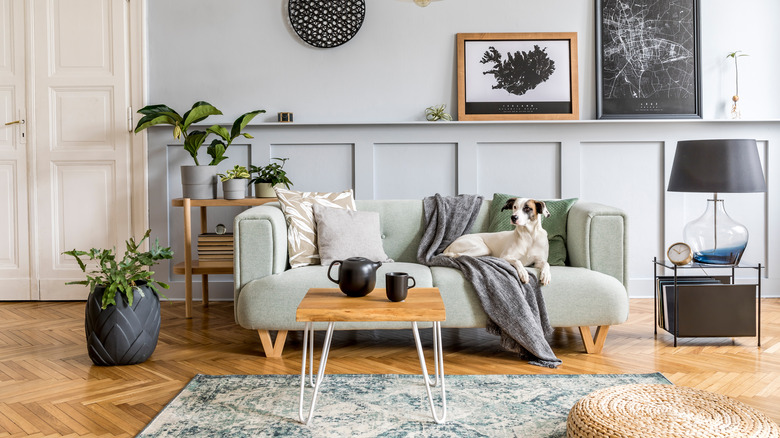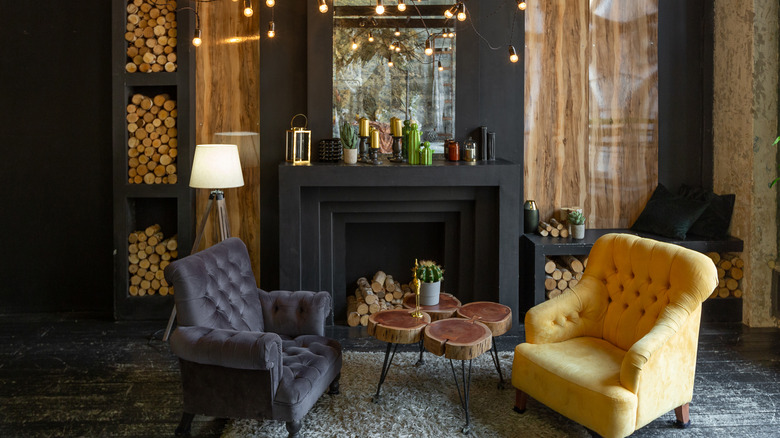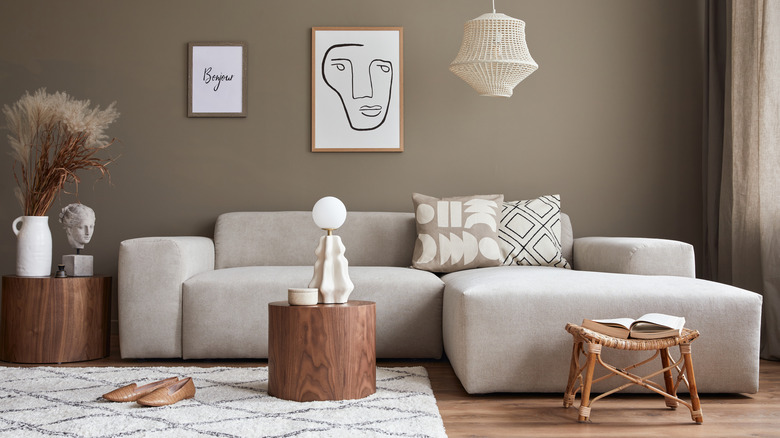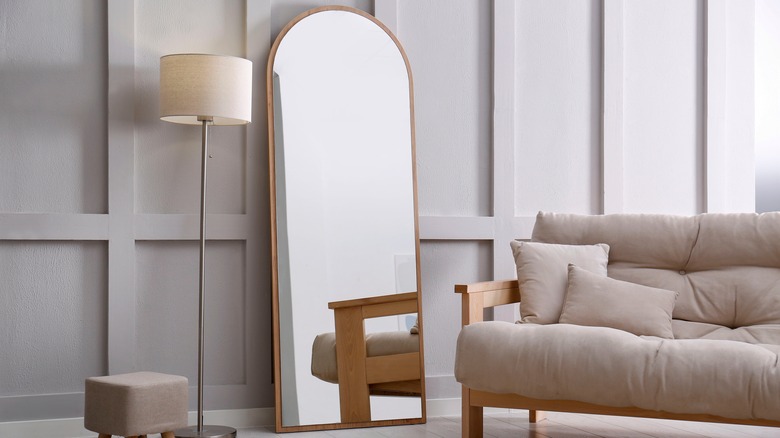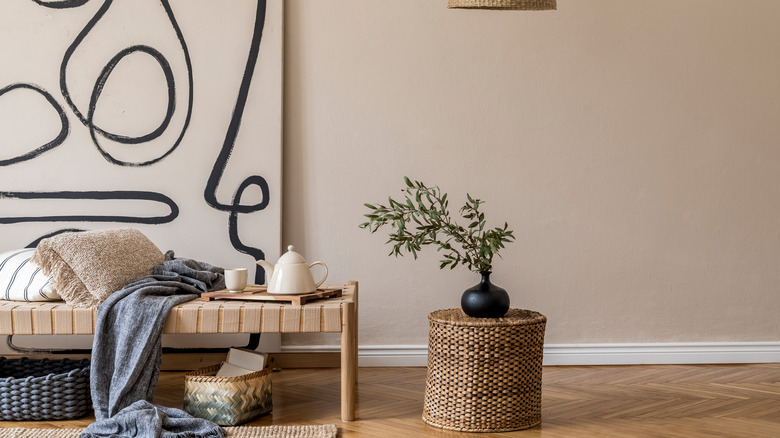5 Expert Tips For Arranging Your Dream Living Room
The living room is one of the most popular rooms in the house, as noted by From House To Home. Whether it be a relaxing evening in, a family movie night, or a robust cocktail party, it is the space to indulge, entertain, and unwind. However, it is also one of the most difficult rooms to get just right. Ease of access, utility, and comfort — there are several factors to consider when arranging this space.
Did you know that living rooms are one of the main rooms that focus on design symmetry? Or that having an area rug is one of the essential finishes to making a space feel inviting? Yes, we know it can be a lot, which is why we're going to break it all down for you in your quest to design your dream home. Here are five of the most important tips to consider when creating this space.
Find your light
Do you live in a corner penthouse or a historical English cottage? Whatever the style of your home, make sure that you build the layout and design around the existing light. In fact, lighting can be the most critical design element that informs your decision-making via Arch Daily). Ideally, you have a baseline of natural light to work with that will show what kind of furniture, tones, and paints will work well within the space. Or maybe you are looking for a statement light piece to do a lot of the heavy lifting.
Aside from having recessed lighting to cover the essentials, this statement piece can often act as a focal point and should complement the rest of the furnishings. Corner lamps are not to be ignored, as missing light can make this space feel smaller than it should. Include task-related lighting for a reading nook or even candles in your plans. These types of light add dimension to your space and help make the living room feel complete and cozy.
Texturize
There is a tremendous opportunity to layer within a living room. From the rug to the couch, to the chairs and the coffee table, the wall paint, and art pieces — think of all of these pieces as part of a bigger tapestry that you are weaving together. Whether that be earthier materials, such as marble and onyx, or country farmhouse textures, such as shabby chic white wood and sherpa, make an effort to include a diversified and interesting mixture of surfaces to invite the eye and inform the overarching theme of the home.
Furniture fabrics are one of the best ways to add texture. Since certain pillows, blankets, and coverings can be seasonally rotated, this is a great way to experiment with different styles and palettes to figure out what suits the space best (as noted by HomeBunch). Furnishings that are in high contrast to the floor will have a more stimulating effect, whereas lower contrast furnishings will be more relaxing to the eye. Keep these differences in mind when thinking about texture, as there is such a thing as doing too much.
Balance form and function
A giant L-shaped sofa is not particularly useful if the den is tiny and requires everyone to hop over the back of the sofa in order to sit on it. Contrarily, the giant atrium-style room looks awkward with a small sofa and no coffee table. When designing your living room, it is important to weigh the utility of the room. What are you going to be using it for? How many people are in your family? How often do you use it as the main social space? When you consider these issues, the form will become a lot clearer.
Casual storage through floating and traditional shelving is both a practical and aesthetic solution to displaying your treasured items and creating the illusion of height. Morning Chores points out that this is one of the best synergies of form and function, as it will keep the floor space open and the layout uninterrupted while showing off some of your favorite items.
Glass and mirrors
Maybe your current living room is in an apartment. Or your current residence just has smaller square footage, so you are at a crossroads of how to make the space feel as grand as possible. Three words: glass and mirrors. Yes, these two elements can work wonders. Spare Foot notes that glass tables and other transparent furnishing pieces can be great optical tricks to utilize when creating that sense of openness and breeziness within a room.
Additionally, mirrors should never be forgotten. They should arguably be prioritized over a television in a small living room because they can invite so much light and a sense of grandeur and can save a room. When configuring the living room, think about the positioning of the seating furniture. Wherever those pieces land, ideally, you'd like the mirror to be across from those so that you and your guests can soak up that optimal reflection and enjoy the mirror at its best.
The artist's corner
Artwork can be a fantastic way to fill up the corners of your living room. It can be easy to dismiss these tiny spaces, as they may not seem significant in your design priorities. But this is really the icing on the cake for a perfect space. LuxDeco notes that having adjacent walls of artwork is a great way to draw intrigue to the space.
People typically place artwork towards the center of this room, but corners are a unique way to get people to take in the whole room. Additionally, it is worth noting that how you hang the artwork can have a great effect on the perceived aesthetic of the house. More classical homes often have art pieces mounted at even heights, while more modern art is displayed at varying heights and lengths. A sculptural piece can also be a fantastic way to draw the eye in a similar way. Whether it features a dramatic texture, color, or shape, it will definitely be a conversation starter.
